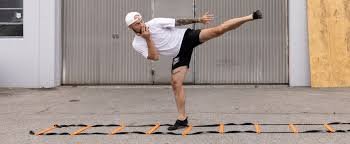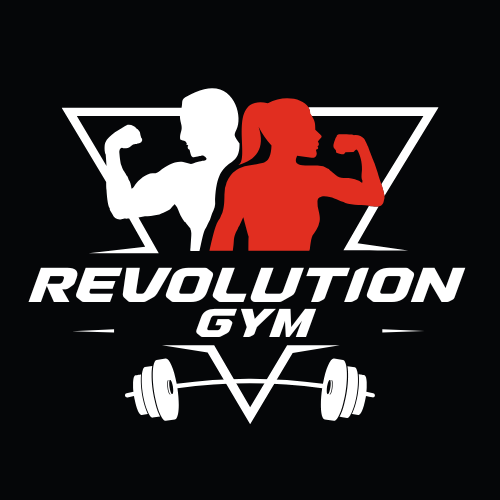Agility

Agility: The Secret Weapon for Peak Performance at Revolution Gym Introduction: Why Agility Matters Agility is more than just moving fast. It’s the ability to change direction quickly, maintain balance, and stay in control of your body while under physical stress. Whether you’re an athlete competing at the highest level, a fitness enthusiast working toward better health, or someone who simply wants to move with more ease in daily life, agility training is a game-changer. At Revolution Gym, we believe agility isn’t just for sprinters or professional athletes—it’s for everyone. A body that is agile is a body that is stronger, more efficient, less injury-prone, and capable of tackling challenges with confidence. This blog will take you deep into the world of agility: what it is, why it’s important, how to train it, and how Revolution Gym’s programs can help you unlock your full potential. Chapter 1: Understanding Agility in Fitness Agility combines speed, strength, balance, coordination, and reaction time. Unlike raw speed, agility focuses on quick changes in direction without losing power or momentum. It’s about control and precision, not just acceleration. Key Elements of Agility: Speed – The ability to move quickly. Coordination – Synchronizing body parts effectively. Balance – Staying steady while shifting directions. Power – Using strength dynamically and explosively. Reaction Time – Responding instantly to changes. Agility isn’t a single skill—it’s a blend of multiple physical abilities working in harmony. Chapter 2: Why Agility Training is Essential Agility training provides benefits that go far beyond athletics. Here’s why it matters for every member of Revolution Gym: Improved Sports Performance: Football, basketball, tennis, and combat sports demand quick changes in direction. Agility is the deciding factor between good and great athletes. Better Functional Fitness: Life itself demands agility—carrying groceries, climbing stairs, or dodging a sudden obstacle requires quick movement and balance. Injury Prevention: Agility builds joint stability and reduces the risk of ankle sprains, knee injuries, and muscle tears. Increased Strength and Power: Explosive movements during agility drills engage fast-twitch muscle fibers. Enhanced Brain-Body Connection: Agility requires focus, quick decision-making, and neural sharpness. At Revolution Gym, we emphasize agility because a strong, mobile, agile body is prepared for anything. Chapter 3: The Science Behind Agility Agility is not random—it’s based on sports science. Here’s how your body adapts when you train agility: Neuromuscular Adaptation: Your nervous system becomes faster at sending signals, improving coordination. Muscle Fiber Recruitment: Fast-twitch fibers get activated, boosting speed and explosiveness. Joint Stability: Agility training strengthens stabilizer muscles, keeping ankles, hips, and knees secure. Cognitive Benefits: Brain speed increases as you practice reacting to unpredictable movement. Agility isn’t just physical—it’s a full-body and mind workout. Chapter 4: Top Agility Training Drills At Revolution Gym, we use science-backed agility drills that are fun, challenging, and highly effective. 1. Ladder Drills Improves foot speed, coordination, and quickness. Variations: high knees, lateral steps, in-and-out hops. 2. Cone Drills Develops rapid direction changes. Examples: T-Drill, Zig-Zag Drill, 5-10-5 Shuttle Run. 3. Plyometric Jumps Builds explosive power and reactive strength. Examples: Box jumps, lateral bounds, depth jumps. 4. Sprint & Change of Direction Mimics sports-like movements. Example: Sprint 10m, cut left, sprint 10m, cut right. 5. Reaction Training Partner or coach gives random commands. Improves decision-making speed and unpredictability response. Our trainers at Revolution Gym customize these drills based on your fitness level, goals, and sport. Chapter 5: Agility Training for Different Fitness Levels Agility isn’t one-size-fits-all. Here’s how we tailor it at Revolution Gym: Beginners: Basic ladder drills, slow cone runs, bodyweight exercises. Intermediate: Complex footwork patterns, plyometric variations, sprint drills. Advanced/Athletes: Sport-specific agility workouts, resistance bands, weighted sprints, and high-intensity circuits. Everyone can train agility—it’s just about starting at the right level. Chapter 6: Agility in Sports Performance At Revolution Gym, many of our members are athletes. For them, agility is non-negotiable. Football Players: Quick cuts, jukes, and dodges require agility. Basketball Players: Crossovers, defense, and rebounding rely on fast footwork. Boxers & Fighters: Dodging punches and countering attacks demand agility. Runners: Trail running, sprinting, and hurdles require fast adaptation. Our sports-focused agility programs give athletes the competitive edge. Chapter 7: Agility for Everyday Fitness Enthusiasts You don’t need to be an athlete to benefit. At Revolution Gym, agility training helps: Office workers reduce stiffness and move better. Parents chase after kids with energy. Older adults stay mobile, reducing fall risks. Fitness lovers burn calories and get leaner. Agility training is a fun, high-energy workout that breaks the monotony of traditional exercise. Chapter 8: Revolution Gym’s Agility Training Programs We pride ourselves on designing agility workouts that are challenging, safe, and results-driven. Agility Circuits: Ladder + cone + plyo + sprint combinations. Group Classes: Fun, team-based agility sessions. Personal Training: One-on-one coaching to refine speed, coordination, and reaction. Sports-Specific Agility Programs: Tailored for athletes in football, cricket, basketball, and martial arts. Every program is progressive—you’ll keep improving without hitting plateaus. Chapter 9: Nutrition & Recovery for Agility Training hard isn’t enough—you need the right fuel and recovery. Nutrition: Protein for muscle repair, carbs for explosive energy, hydration for endurance. Recovery: Foam rolling, stretching, mobility drills, and adequate sleep. Supplements: Creatine, BCAAs, and electrolytes can support performance. At Revolution Gym, our coaches guide you not just in training but also in smart recovery and nutrition. Chapter 10: Member Success Stories Many of our members have transformed through agility training: Rohan, 28 (Football Player): Improved his sprint speed and dodging ability after 3 months of agility drills. Priya, 35 (Fitness Enthusiast): Lost 10kg while improving balance and coordination through agility circuits. Arjun, 42 (Corporate Professional): Overcame lower back pain and improved mobility by adding agility workouts. These real stories show that agility training works for everyone. Chapter 11: How to Start Your Agility Journey at Revolution Gym Step 1: Meet our trainers for a fitness assessment. Step 2: Get a personalized agility plan. Step 3: Train consistently with our support. Step 4: Track your progress with monthly performance tests. With guidance, you’ll see faster results
